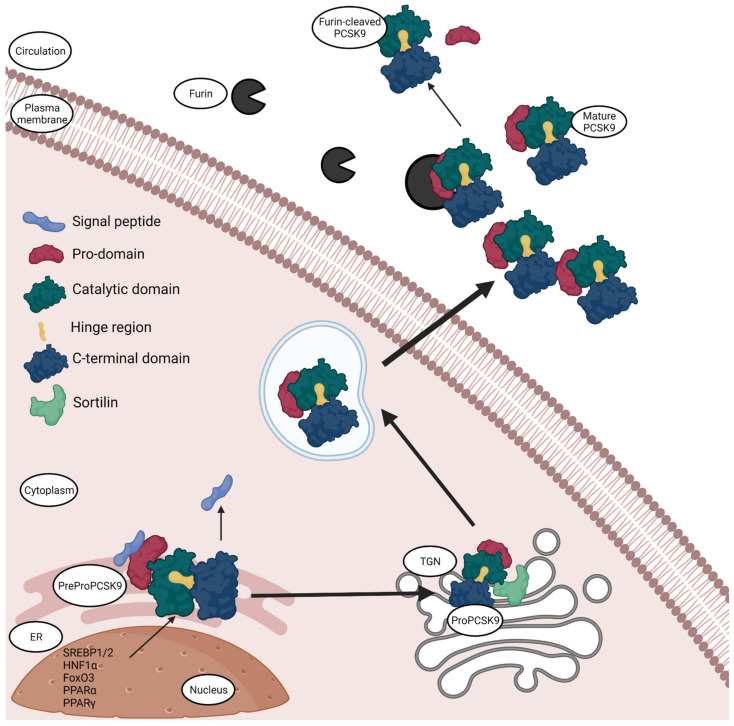Figure 1.
Synthesis and secretion of PCSK9. PCSK9 is synthesised in the endoplasmic reticulum (ER) with the help of transcription factors sterol-response element binding protein (SREBP-1/2), hepatocyte nuclear factor 1α (HNF1α), forkhead box O3 (FoxO3), Peroxisome proliferator-activated receptor α and γ (PPARα and PPARγ). The synthesised PCSK9 is in the form of inactive zymogen, called PreProPCSK9. PreProPCSK9 has five segments: a signal peptide, the pro-domain, catalytic domain, hinge region and the C-terminal domain; the protein then undergoes autocatalytic cleavage in the ER to lose the signal peptide and becomes ProPCSK9. Pro-PCSK9 is then transported to Trans-Golgi Network (TGN), where it interacts with Sortilin, undergoes proteolysis and the mature hetero-dimer PCSK9 is then transported in endosomes and secreted into the circulation. Normally, mature PCSK9 has its pro-domain non-covalently attached, although in circulation it can encounter furin, which then cleaves the pro-domain and releases a smaller peptide into circulation that is less active than the hetero-dimer PCSK9. The figure was created with Biorender.com (accessed on 19 May 2021).

